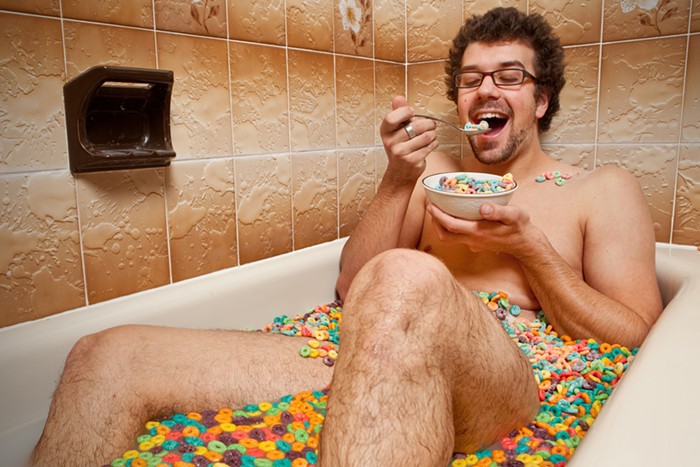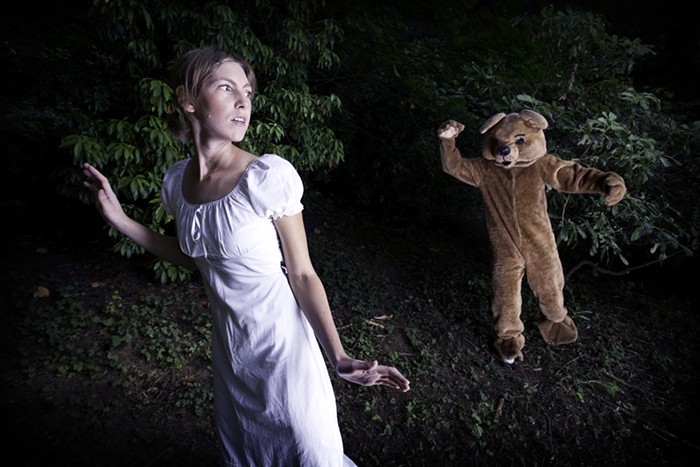No longer content to genetically alter animals and each other, in Claytan-Daniels' future our inheritors will alter the very flow of time, simply because they're bored.
Part two of The Changers picks up with Geaza and Bisso dealing with a little aquatic man; a product of their altered future come back in time to thank them for their efforts. But when the aqua-man flips out and bites another human, Geaza and Bisso are forced to question the integrity of their mission. Perhaps destroying the human race of the future in order to bring about creatures like this isn't such a good idea. But then again, terminating the mission involves some pretty drastic consequences.
Claytan-Daniels simplifies his heavy material without ever condescending, while depicting his world with stark, lovely green-and-white drawings. The combination of conceptual ambition and readability is impressive in The Changers, as is the fact that Claytan-Daniels has pulled it off at the age of 24. JUSTIN WESCOAT SANDERS III
Johnny Ryan's agro-absurdist Angry Youth Comix has been taking the low road since the early '90s, leaving no outhouse unturned. This Portajohnny, a compendium of Ryan's early work, includes early self-published issues of AYC and other hard-to-find contributions to various anthologies.
Portajohnny is fully offensive. There are gags about rape, racism, sexual identity, and suicide. Everyone is a target for Ryan. But it's just a comic book, right? Right. Portajohnny actually emerges from the maggot-infested gutter where most things of its ilk reside, because, like Sam Raimi's Evil Dead, while it's truly horrifying, it's also sidesplitting. The real treasure here is where gag intersects with artistic focus. Ryan's stylized exaggeration often meets the punch line perfectly, like a stripper targeting a construction worker on payday.
Next payday, treat yourself royally and pick up a copy of Portajohnny. It definitely merits some prime real estate next to your throne. LANCE CHESS
The title of Indigo Kelleigh's Chutney Point refers to the locale for a convoluted mystery, which involves a psychic sixth toe, an android ballerina, a talking dog, and an evil doctor with stubs for hands. Kelleigh puts all of his effort into these sorts of details, making the town of Chutney Point and its half-baked murder plot as constantly wacky/ crazy/zany as possible. It's a style that could work for a serialized comic strip, but for a 152-page mystery is simply annoying.
And that's unfortunate--Kelleigh has good instincts for interesting character traits and his artwork is promising in a cluttered, loose way (when it's not a sloppier take on the work of Usagi Yojimbo's Stan Sakai).
Reading Chutney Point is like watching Kelleigh waver between putting effort into a dark story with absurd intrusions, and crafting a comedy with dark overtones. Either of those could have worked, but since Kelleigh's unwilling to do either, Chutney Point ends up being neither. Shrug with me: Meh. ERIK HENRIKSEN














